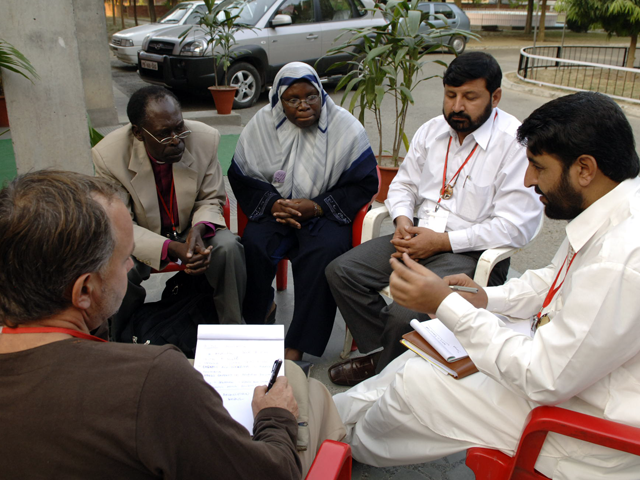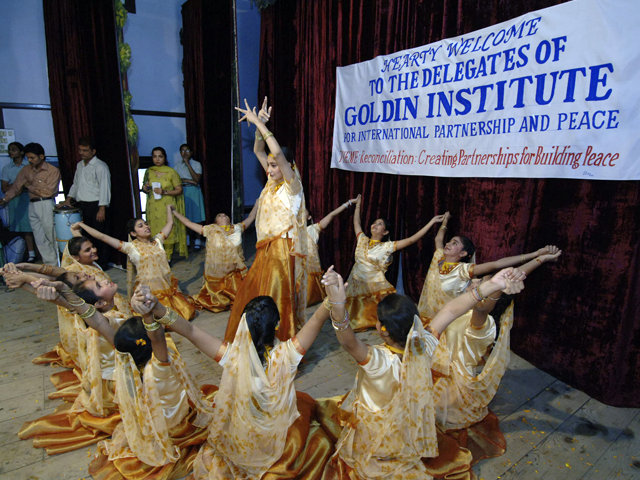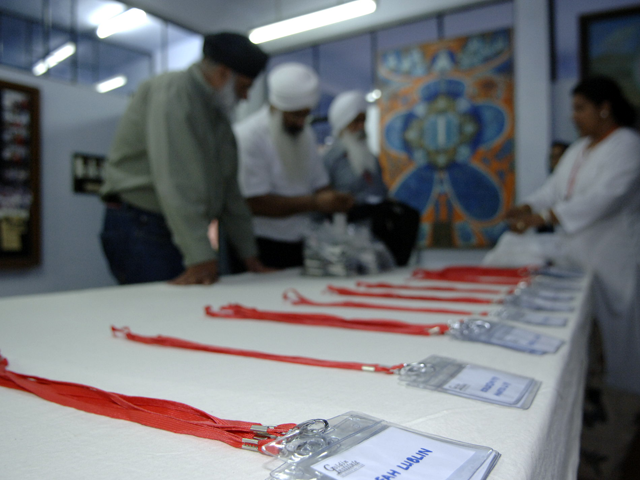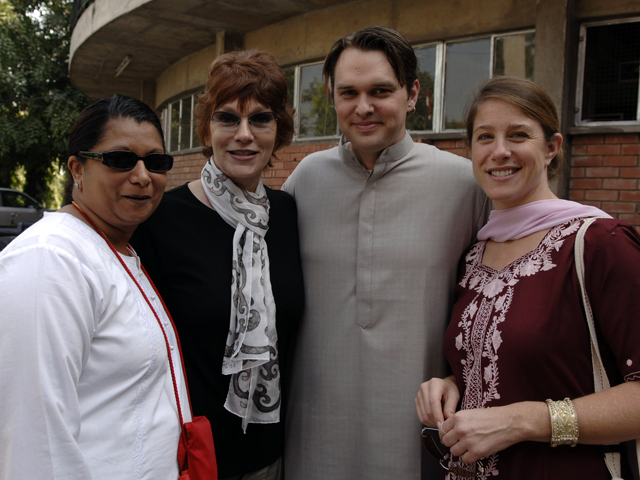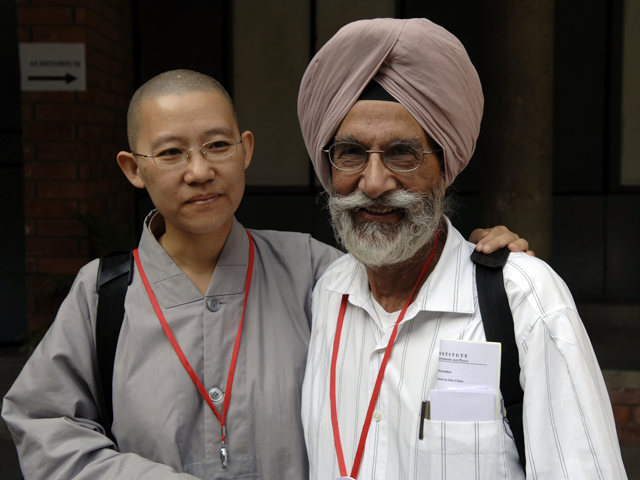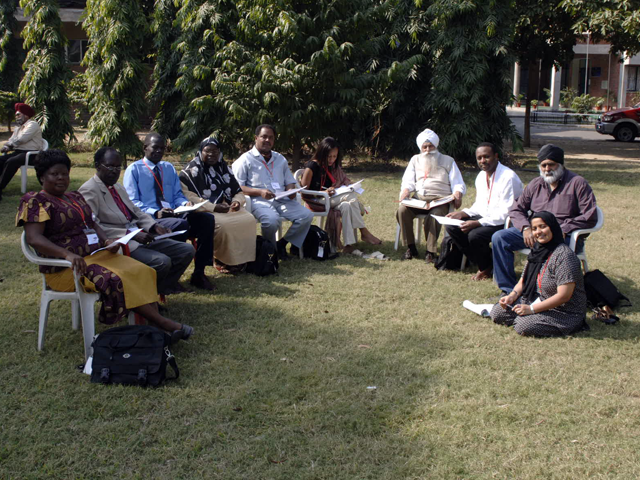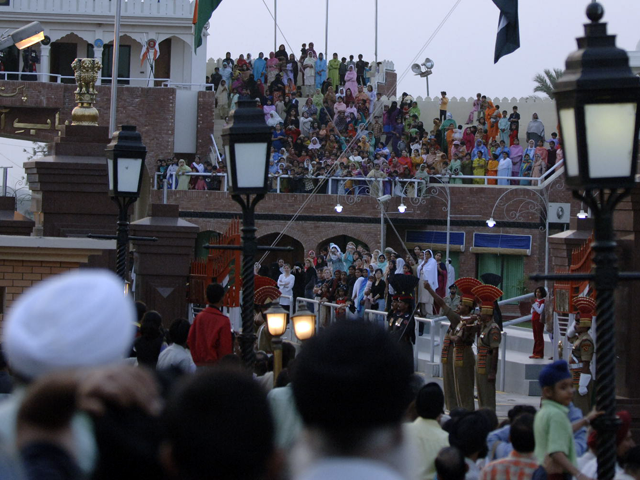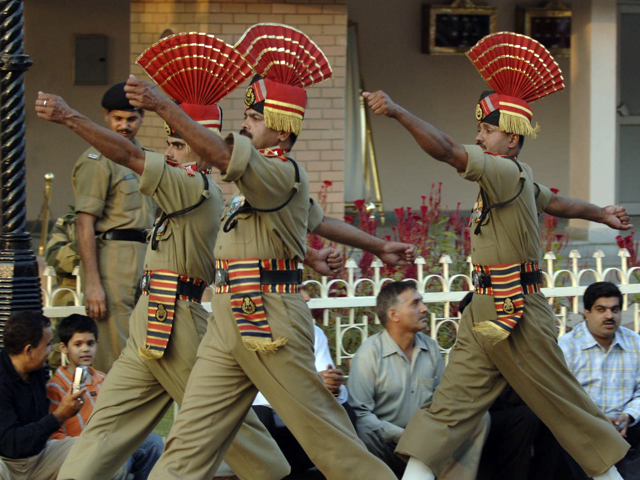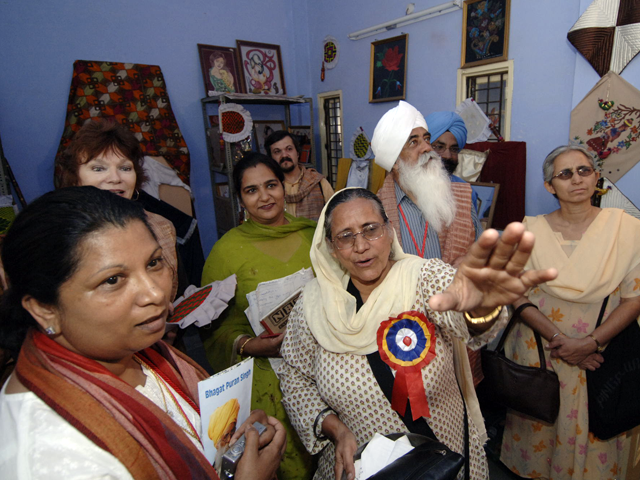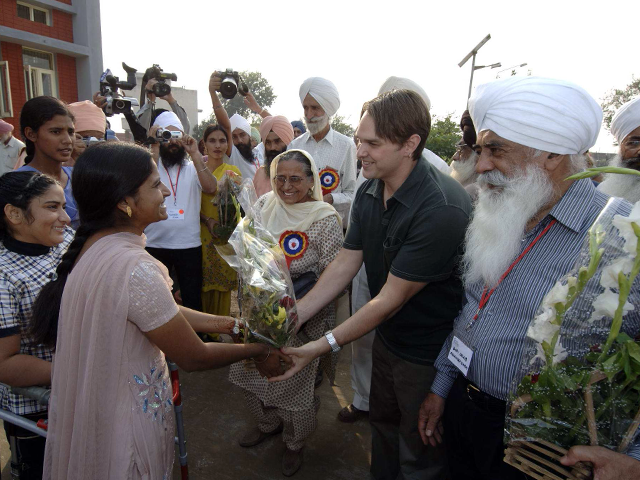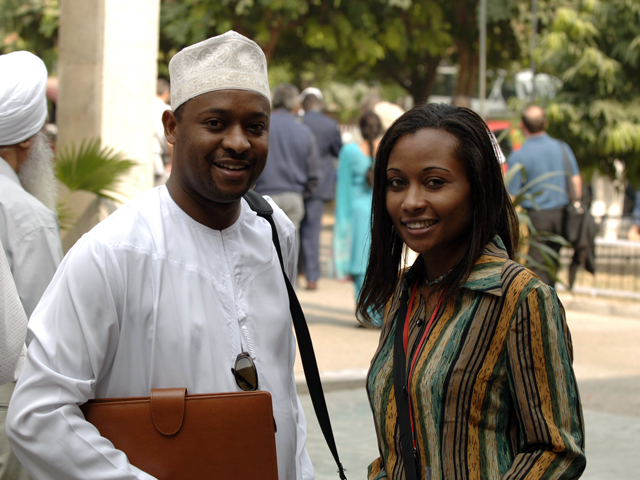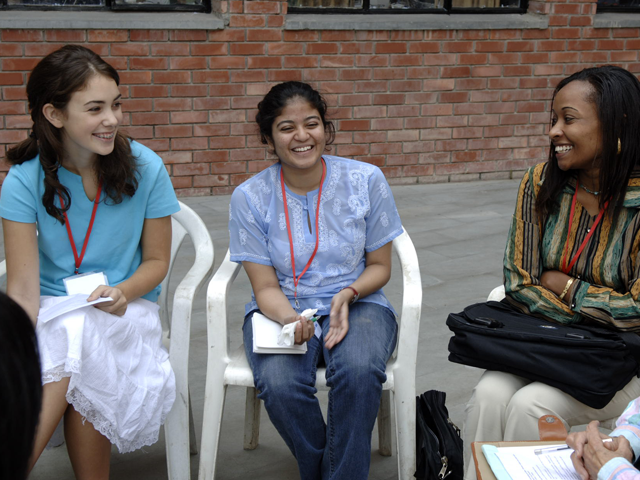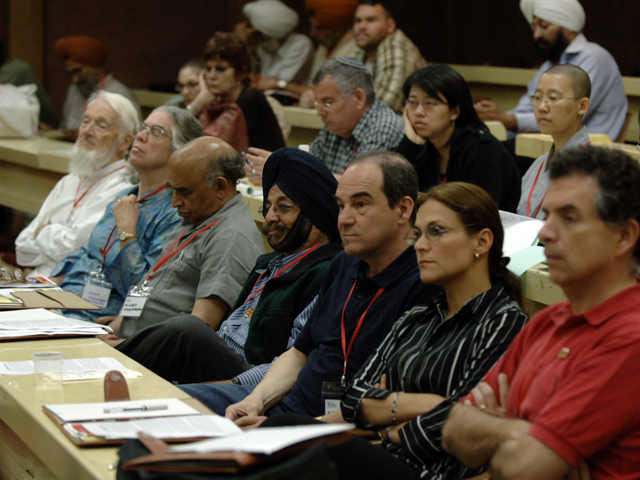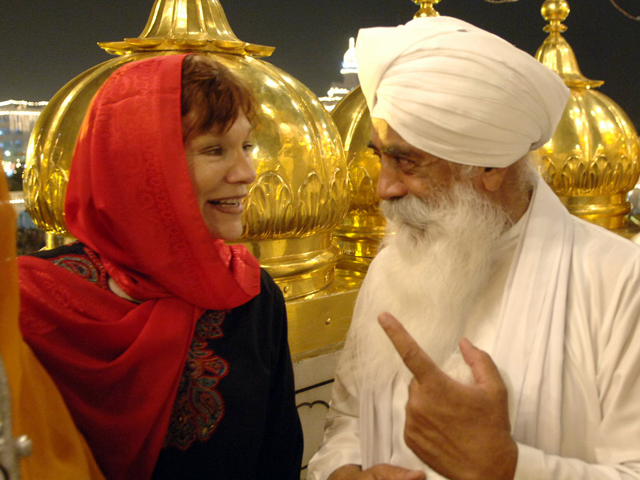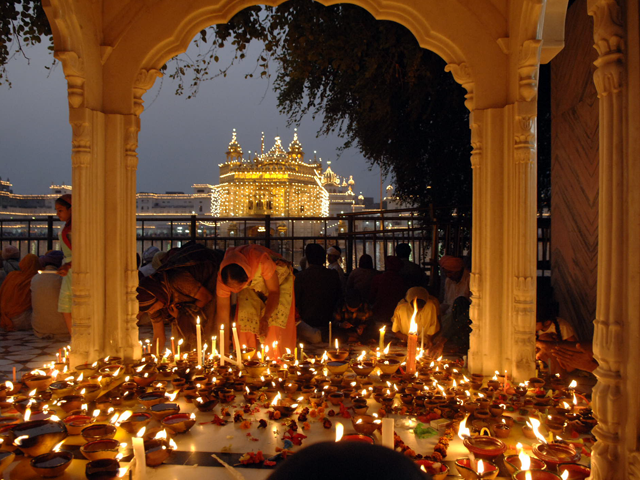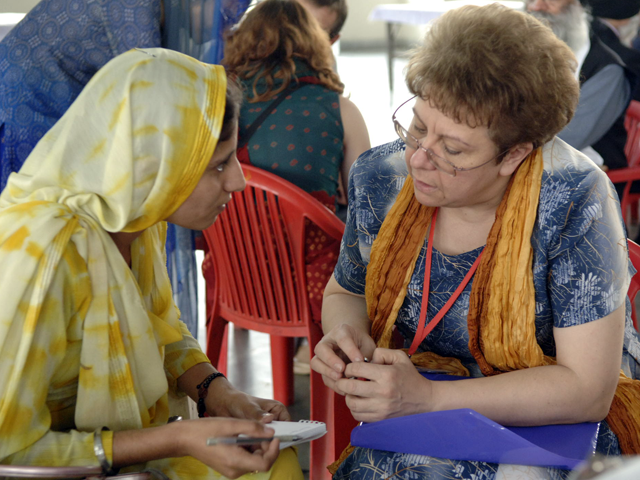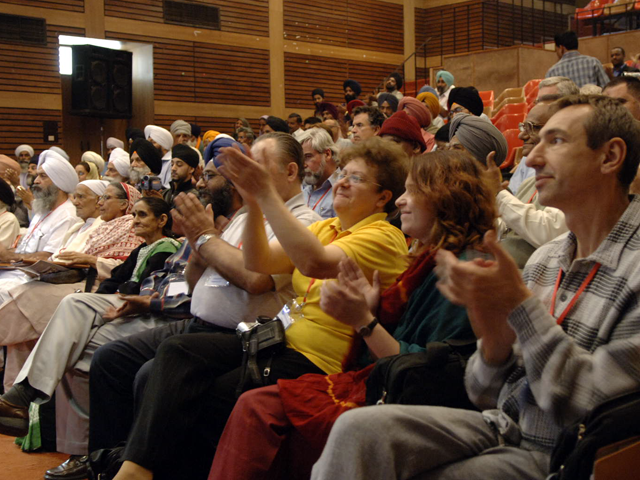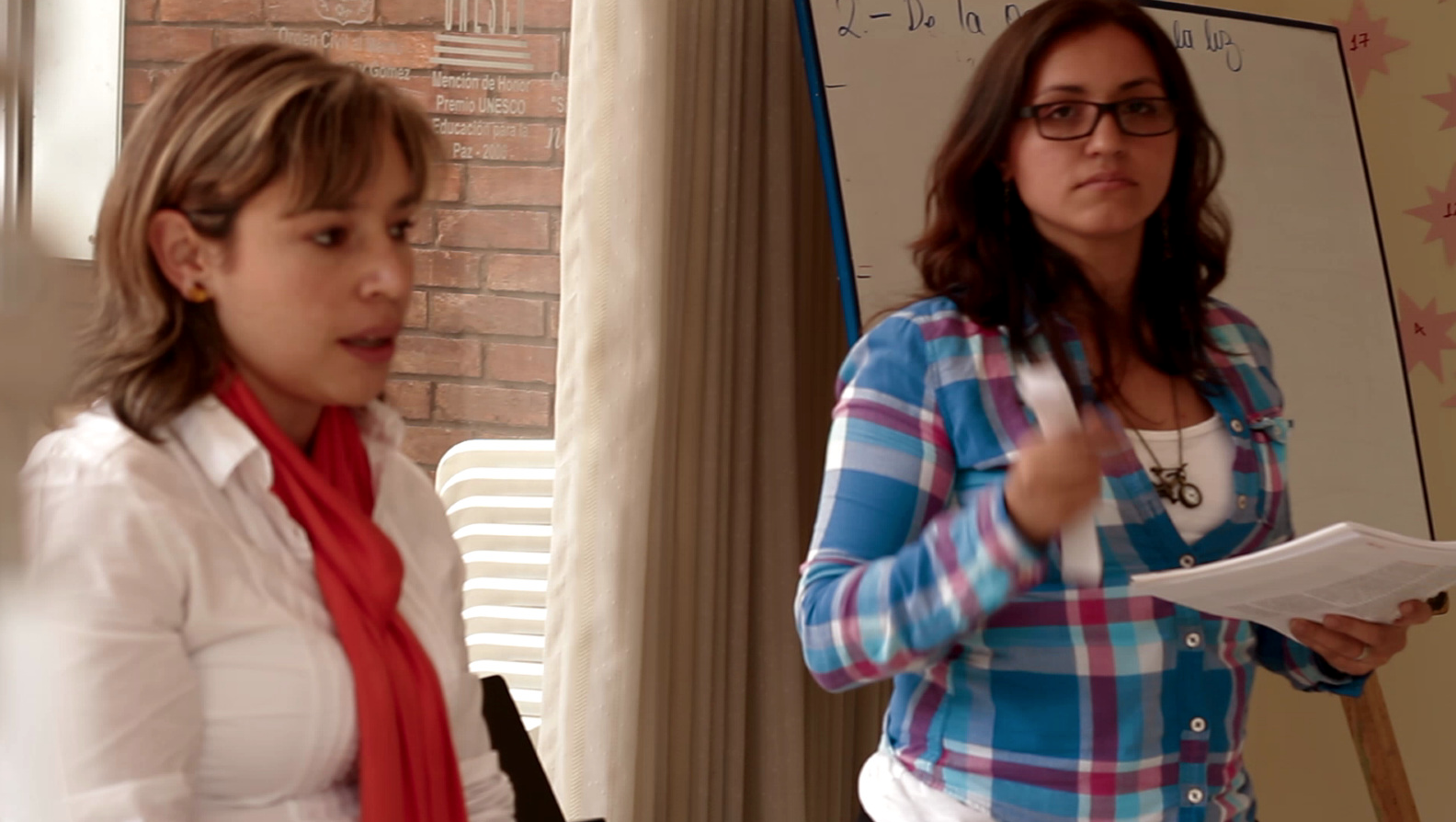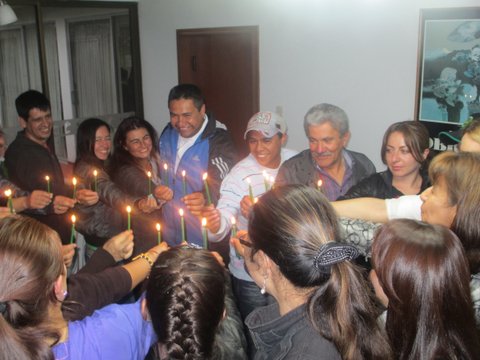Reconciliation: Creating Effective Partnerships for Building Peace
One need not speak Hindi, Urdu or Punjabi to sense the rivalry and at times antagonism being expressed by over 10,000 people in stadium seating on both sides of the Wagah border between India and Pakistan. It was hard to hear the local host translate the Urdu slogans of "Death to India" over the anti-Pakistan slogans being roared by the thousands of Indians around us. The crush of thousands rushing to the border for the daily ceremonial slamming of the gates between these nuclear neighbors made it difficult to keep our group of grassroots leaders together as we walked the last kilometer to the border gate
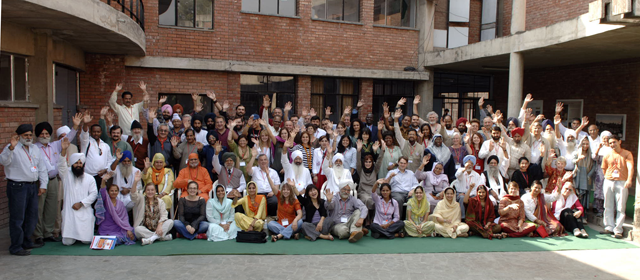
The press and noise of the crowd didn't abate as Goldin Institute participants from Afghanistan, Ethiopia, Tanzania, India and Pakistan joined Bhai Sahib Mohinder Singh in leading solemn prayers for peace and reconciliation from Sikh, Muslim, Christian and Hindu traditions. It was both inspiring and discomforting to hear clear voices for peace amidst the cacophony of ill will.
Official borders are clearly not the only places where friction is manifest. The forces of globalization are increasingly making the world smaller. Daily contact with a wide variety of views, cultures, traditions, practices and beliefs is a common feature of modern life. These global forces can offer us an opportunity to be enriched by interaction with the diversity around us while increasing our appreciation for our own traditions, values and identities.
At the same time, this increase in interaction can be threatening, leading to misunderstanding, strain, and too often to violence. Identities can become flattened or sharpened by the forces of assimilation and the reaction to them. It seems our growing proximity will lead both to opportunities to interact in new ways and to sobering challenges that call for new tools, skills and relationships. How can diversity be a source of strength and innovation? How can the tensions that grow from our increased diversity be abated? How can people reconcile and transform conflicts when they do arrive? How can leaders create effective partnerships for building peace?
To explore these questions, the Goldin Institute convened teams of engaged leaders from 25 cities in Afghanistan, Bosnia and Herzegovina, Brazil, Cambodia, Columbia, Congo, Ethiopia, India, Israel, Kenya, Mexico, Pakistan, the Philippines, Spain, South Africa, Sri Lanka, Taiwan, Tanzania, Turkey, Uganda, the United Kingdom, Ukraine, the United States and Zimbabwe in Amritsar, India in November 2005 to focus on the theme of Reconciliation: Creating Partnerships for Building Peace.
